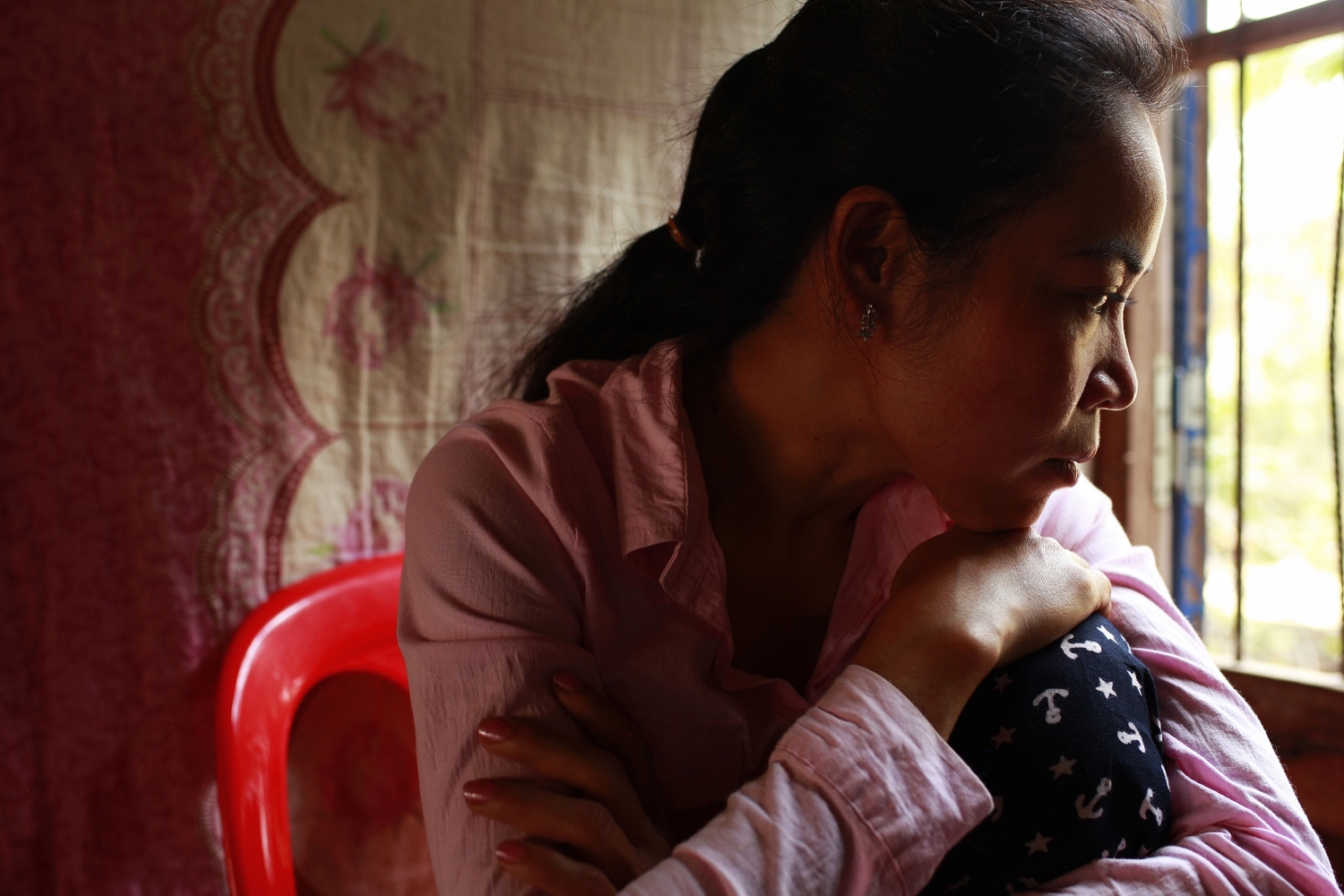The Story
In 2011, Hab Saly was struggling to make her sewing business a success. She left her monotonous and depressing job in Phnom Penh’s garment factories after six years to pursue a dream to start her own sewing business in her home village.
It all started when...
With help from Alan Lightman and his Harpswell Foundation, Saly took six months of sewing lessons and returned home to teach other women in her rural village to sew -- on donated foot-powered sewing machines, as the village has no access to electricity. The future was beginning to look bright for Saly, who never had the opportunity to attend school or learn to read and write.
But making Cambodian-style, intricately beaded dresses turned out to be the easy part. Finding customers for the dresses Saly and her small team of seamstresses produced was proving to be impossible. Yet, their families needed money, and if the business failed, they would have no choice but to return to the drudgery of the far away garment factories, returning to the slum-like conditions in the city, and long workdays...returning to seeing their families and children only once every six weeks.
On the other side of the world, Marie Eckstein was at odds as well. After a 30-year career in engineering and business, the retired executive was searching – and praying – for a purposeful outlet for her energy and talent.
Saly and Marie met during a hot, steamy day in Tramung Chrum, Saly’s home village. Less than a month earlier, a mutual friend introduced Marie to Alan Lightman, who explained the mission of The Harpswell Foundation: “to empower a new generation of women leaders in Cambodia.” Drawn to the concept of investing in the women of developing economies as the best way to elevate a society’s quality of life, Marie jumped at the chance to meet Alan in Cambodia, just three weeks later.
Marie explained, “The first time I met Saly, she was trying to convince Alan to provide funding for fabric to make dresses. Alan was patiently explaining to Saly and the young seamstresses sitting behind her, that if Saly could not find customers for her dresses, he could not give her more money for fabric.
“As I sat there in the dirt in front of Saly’s parents’ house, I was fascinated by this energetic and determined young woman who would not take “no” for an answer.”
Never mind that Alan is an astrophysicist on the faculty of MIT, that he is the author of many fiction and non-fiction books, including the global best seller, “Einstein’s Dreams.” Saly continued to argue her case, ignoring Alan’s patient resistance. Marie felt a kinship with Saly, who spoke with a passion that Marie recognized in her younger self.
As the meeting wound down, Marie asked to see samples of the clothing. To Marie’s surprise, Saly brought out dresses which were beautiful works of art -- inspiring to look at -- with intricate beading and ornamentation. And they were all made on foot-powered sewing machines! These women had talent.
Marie remembers thinking, “with Saly’s drive and determination, and the sewing skills of these women, I can help her make this a successful business.” With a parting hug, a partnership was born that changed the lives of both women, and many lives on both sides of the world, along the way.
Marie and Saly--new business partners!
Marie began consulting Saly about products, styles and colors that would appeal to women abroad – silk purses and scarves – at prices that would provide the seamstresses with a competitive wage and profit-sharing. She helped find a market, among friends and acquaintances at first, who enjoyed the products and were also compelled by the Harpswell mission behind Red Dirt Road.
So, too, it was that mission and the passion of Marie, Saly and her growing cadre of seamstresses that convinced Lin Alessio to join the effort when at a crossroads in her own life.
Red Dirt Road Changes Lives on Both Sides of the World
Late in 2012, Lin accompanied Marie on a trip to the village. An educator, artist and small business owner, Lin is a nurturer, naturally curious and action-oriented. She was also deeply grieving the sudden loss of her husband of 25 years. An adventure with Marie was just what she needed.
Lin immediately fell in love with Saly and the seamstresses. Marie watched with gratitude as Lin adeptly taught the women how to slice fabric with rotary cutters and create artwork out of the pieces of silk fabric. A new line of “Art Bags” emerged and now has a loyal following of women who appreciate the silk artwork individually created on each piece, as well as the casual style and highly functional designs.
Lin, as an extension of her involvement in Red Dirt Road has expanded her engagement into the community, enriching many lives in the village beyond the seamstresses and their families. Marie and Lin now work together in a close partnership, each contributing their different experiences and talents to the effort, paying their own travel and neither taking a salary.
In 2013, award-winning film maker Rodney Rascona was in Cambodia and heard about Red Dirt Road. He visited the Tramung Chrum workshop, met Saly and her team, and was inspired to tell their story. He returned to the village several times over the next two years to film and direct the recently released documentary, “Red Dirt Road.” The movie follows the life of Saly as she travels the red dirt road home to her village to pursue her dream to start her own sewing business.
With two popular product lines, a new website, and a growing base of loyal customers in Michigan and beyond, the documentary movie is helping take the Red Dirt Road brand to a new level of exposure and sales.
Saly recently hired three new seamstresses to meet the expanding demand, and the team is working to fund a larger, more efficient and weatherproof workshop.






